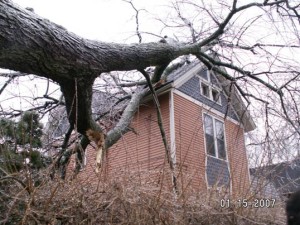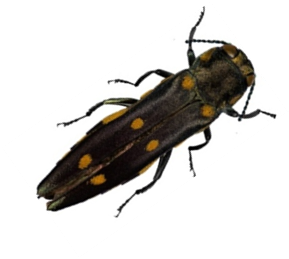A new film demonstrating the impact of non-native tree-killing insects and diseases will be shown on or around Arbor Day (April 20). You can help ensure that lots of people see the film!!! Contact the program manager at your local PBS channel to ask that the channel broadcast the film.

“Trees in Trouble: Saving America’s Urban Forests” focuses on emerald ash borer in Cincinnati. The film explores our connections to the trees and forests in our communities – and the threats to those trees. The film’s website links viewers to resources for taking action.
To see clips from the film and other resources go to this site.
The film was produced by Torrice Media. Featured experts and speakers include Prof. Dan Herms of Ohio State, Jenny Gulcik, a community forestry consultant, and Cincinnati Council member Wendell Young.
As we all know, killer pests threaten trees across the country, not just in southern Ohio! Such pests are usually introduced first in cities – not necessarily ports! – because that is where crates and pallets, imported ornamental plants, and other articles to which pests attach arrive. Furthermore, trees along streets and in yards and parks are often more vulnerable than forest trees to such introduced pests because they are often subject to other stresses such as soil compaction, air pollution, elevated temperatures, and salt exposure. Finally, city trees are often planted as multiple individuals of the same species; when a pest that attacks that species arrives, entire neighborhoods can lose their tree canopy – and the real values that canopy provides.
Because of the high value of urban trees, these pests’ greatest economic damage is in urban and suburban areas. The study by Julianne Aukema and others documented that municipalities spend more than $2 billion annually to remove trees killed by non-native pests. Homeowners spend $1 billion a year removing trees killed by non-native pests, and another $1.5 billion is lost in property values due to tree mortality.
Thus, it is vitally important that American city dwellers learn about the values that trees provide to them, the threat to those values from introduced pests, and what they can do to minimize this threat. “Trees in Trouble” is a tool to advance citizens’ understanding of these issues through a combination of broadcasts, compelling video presentations and active civic engagement efforts linked to the film.

Some people – less familiar with the issue than we are – do not immediately understand the relevance of Cincinnati’s story to other cities. We know that while the trees and killers differ across the country, the cost to the communities is the same: destruction of trees that provide shade and other important ecosystem services and create our sense of home. Plus, the ways these pests are introduced are the same – and so are the steps we can take to reduce this threat.
[The goldspotted oak borer illustrates the universality of this threat – trees in southern California are being killed, too!]
You can help overcome this roadblock!
If you would like to help promote the film to your local PBS station or to local viewers, contact Andrea Torrice at 513-751-7050 or here
If you would like to obtain a copy of the film to screen to your group, contact Andrea Torrice at the same phone number or website. (Andrea is Italian; her name is pronounced “to re chay”, with the accent on “re”.)
Source:
Aukema, J. E., B. Leung, K. Kovacs, C. Chivers, K. O. Britton, J. Englin, S. J. Frankel, R. G. Haight, T. P. Holmes, A. M. Liebhold, D. G. McCullough, and B. Von Holle. 2011. Economic Impacts of Non-Native Forest Insects in the Continental United States. Plos One 6.
Posted by Faith Campbell